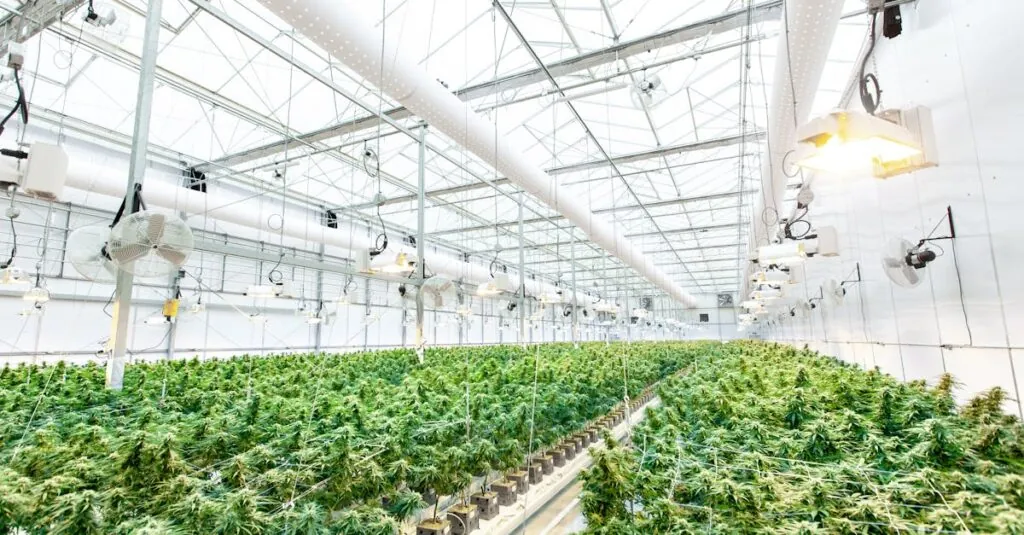Creating the perfect growth environment is like setting the stage for a blockbuster movie. You wouldn’t want to film a thrilling action scene in a quiet library, right? Similarly, a well-planned setup is essential for fostering personal and professional development. Whether it’s a cozy corner in your home or a bustling office space, the right environment can make all the difference in unleashing creativity and productivity.
Table of Contents
ToggleUnderstanding Growth Environment Setup
A growth environment setup involves creating spaces that foster personal and professional development. It plays a crucial role in enhancing creativity and productivity.
Definition and Importance
A growth environment refers to a setting that nurtures learning and psychological safety. It enhances the ability to explore new ideas, facilitating innovation. Such environments encourage collaboration, leading to improved problem-solving. Without a supportive space, individuals may struggle to reach their full potential. Thus, prioritizing the right environment leads to better outcomes in both individual and team endeavors.
Key Components
Comfortable seating and abundant natural light form the foundation of an effective growth environment. Accessibility to resources like books, technology, and materials enhances learning opportunities. Incorporating flexible workspaces allows for movement and varying activities. Personalization through artwork or plants encourages a sense of ownership and inspiration. Lastly, having areas for both collaboration and quiet reflection addresses diverse working styles, maximizing overall productivity.
Factors Influencing Growth Environment
Creating an effective growth environment hinges on multiple factors that shape its overall quality. Identifying these influences helps in crafting spaces conducive to development.
Physical Factors
Comfortable seating enhances focus and reduces fatigue. Natural light fosters positivity and boosts mood, leading to increased productivity. Accessibility to essential resources minimizes interruptions and keeps individuals engaged. Flexible workspaces cater to diverse preferences, accommodating both collaboration and solitary work. Personalization with artwork or plants creates a sense of ownership and connection to the space. Designated areas for quiet reflection provide essential moments of solitude, improving clarity and concentration.
Biological Factors
Individual biological needs play a significant role in determining growth environments. Proper ventilation ensures fresh air circulation, promoting cognitive function. Temperature control impacts comfort levels, which directly affects concentration and productivity. Access to healthy snacks supports sustained energy and mental alertness. Regular breaks aid in cognitive recovery, preventing burnout and enhancing overall effectiveness. Incorporating elements like ergonomic furniture reduces strain and encourages long hours of productive work.
Steps to Create an Effective Growth Environment Setup
Creating an effective growth environment setup involves various critical steps focused on optimizing the space for maximum productivity and creativity.
Assessing Needs
Identifying specific needs is vital for effective growth environment setup. Start by evaluating the goals of the team or individual. Engage in conversations to gather insights on preferences regarding workspace layout and resources. Consider feedback about noise levels, comfort, and collaboration opportunities. Examining existing workflows helps pinpoint gaps in support and resources. Use this assessment to ensure the setup caters to diverse working styles while maximizing engagement and creativity.
Selecting Appropriate Materials
Choosing the right materials enhances the overall growth environment. Prioritize ergonomic furniture to support physical well-being and reduce strain during work sessions. Incorporate materials that promote natural light, such as reflective surfaces or glass partitions, to create a bright atmosphere. Use versatile furniture that facilitates easy rearrangement for collaborative tasks. Select colors that inspire creativity and productivity, enhancing the mood of the workspace. Ensure that all materials are durable and easy to maintain, contributing to a sustained environment conducive to growth.
Common Challenges and Solutions
Creating an effective growth environment often presents challenges. Addressing these challenges quickly enhances productivity and creativity.
Environmental Control Issues
Environmental control issues such as temperature, humidity, and ventilation frequently disrupt focus. Maintaining optimal conditions for comfort becomes essential. Adjusting thermostats or using fans keeps the space conducive to work. Monitoring humidity with dehumidifiers adds additional comfort, fostering an inviting atmosphere. Regular maintenance of air systems also ensures effective ventilation, ultimately improving air quality. Incorporating plants can naturally enhance air quality while adding visual appeal. Achieving the right balance supports a healthy workspace.
Pest and Disease Management
Pest and disease management represents another common obstacle. Infestations disrupt productivity and pose health risks. Implementing preventive measures, such as sealing cracks and keeping areas clean, reduces the risk of pests. Regular inspections of spaces identify potential issues before they escalate. Employing non-toxic pest control methods promotes safety for everyone in the environment. Establishing a routine for addressing any signs of pest activity ensures ongoing vigilance. Creating educational materials about pest prevention reinforces a collective responsibility for maintaining a healthy workspace.
Creating an ideal growth environment is essential for fostering personal and professional development. The right setup not only enhances creativity and productivity but also promotes collaboration and innovation. By prioritizing comfort and accessibility individuals can thrive in spaces designed to meet their unique needs.
Addressing both physical and biological factors ensures that the environment supports sustained focus and engagement. Taking proactive steps to maintain optimal conditions and mitigate challenges can transform any workspace into a hub of productivity. Ultimately a well-planned growth environment empowers individuals and teams to reach their full potential.






